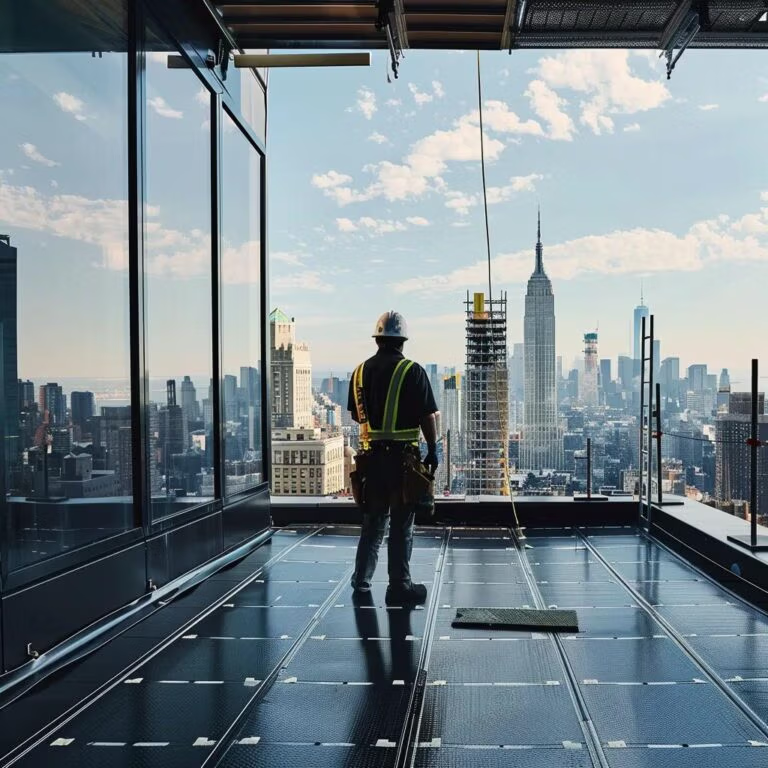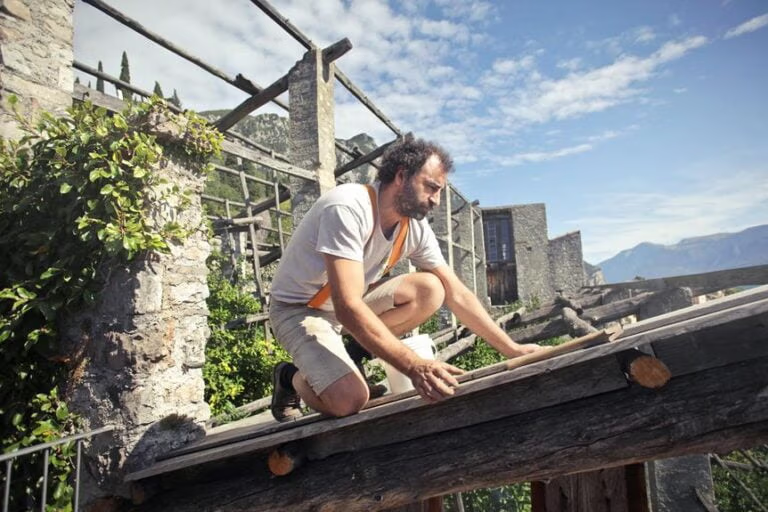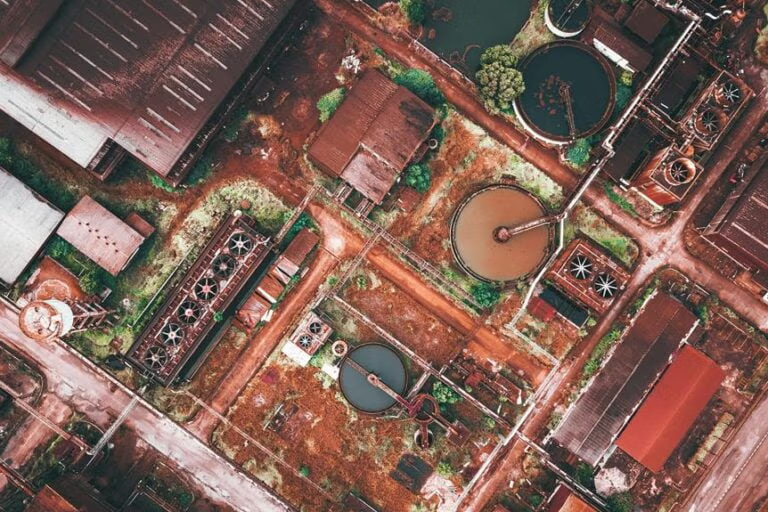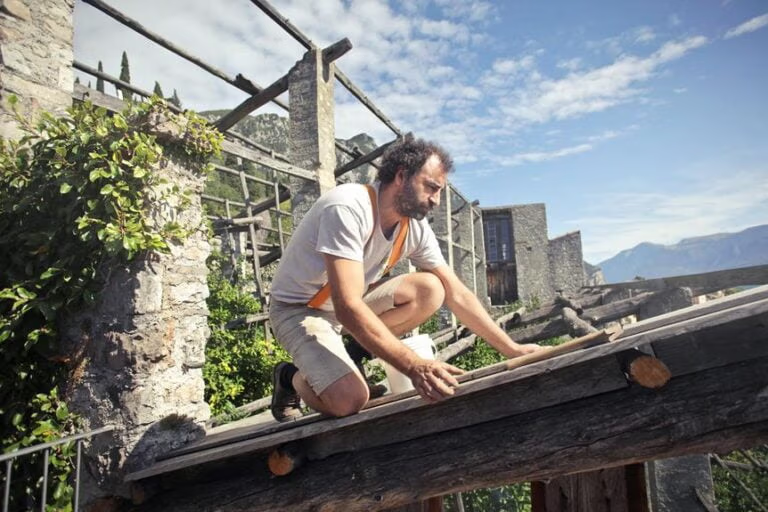Yes, many roofing nails are galvanised to provide superior corrosion resistance and enhance durability. The galvanization process involves coating the nails with zinc, creating a protective barrier that considerably extends their life by preventing rust. This protective layer is essential for maintaining the structural integrity of roofs, especially in environments exposed to harsh weather. Galvanized roofing nails offer a practical, long-lasting solution for roofing applications, ensuring the nails remain robust and effective over time. Understanding the full benefits and applications of these nails reveals further insights into their importance and utility in roofing.
Are Roofing Nails Galvanized?
- Roofing nails can be galvanized to provide superior corrosion resistance and extend lifespan.
- Galvanization involves coating nails with zinc to prevent rust and deterioration.
- Not all roofing nails are galvanized; material options include aluminum, stainless steel, and copper.
- Galvanized nails are often preferred for their cost-effectiveness and long-term durability.
- When selecting roofing nails, ensure compatibility with the roof material to maximize effectiveness and protection.
Understanding Galvanization
Galvanization, a critical process involving the application of a protective zinc coating to steel or iron, prevents rusting and enhances the durability of metal products such as roofing nails. This method, primarily achieved through hot-dip galvanization, involves submerging the base metal in a molten zinc bath. The resultant reaction between zinc and iron forms a series of intermetallic layers and a pure zinc outer layer, providing formidable defense against corrosion, ensuring longevity and structural integrity.
The implications of this process extend beyond rust prevention. Galvanization stands as a proof to sustainability in the manufacturing sector. Utilizing zinc, which is abundant and recyclable, minimizes the environmental impact associated with the production and disposal of metals. Additionally, the longevity of galvanized steel reduces the need for frequent replacements, diminishing waste and lowering the demand for raw materials.
In practical terms, the freedom from frequent maintenance and replacement that galvanization allows is invaluable. This freedom not only enhances operational efficiency but also promotes a more sustainable use of resources, aligning with modern ecological standards. This way, the galvanization of roofing nails exemplifies a harmonious balance between industrial demands and environmental stewardship, embodying both practical utility and a commitment to sustainability.
Benefits of Galvanized Roofing Nails
Galvanized roofing nails offer superior corrosion resistance, greatly extending the lifespan of roofing structures. These nails are treated through a galvanization process, which involves the application of a protective zinc coating. This coating is essential in rust prevention, ensuring that the nails maintain their structural integrity and functionality over time.
The primary advantage of using galvanized nails in roofing applications lies in their enhanced longevity and strength. These characteristics are critical in environments that are prone to harsh weather conditions, such as high humidity or saline atmospheres. By choosing galvanized roofing nails, homeowners and contractors can guarantee a more resilient roofing system that stands the test of time and reduces the need for frequent repairs or replacements.
Here's a quick glance at the specific benefits of using galvanized roofing nails:
| Benefit | Description | Impact on Roofing Project |
|---|---|---|
| Corrosion Resistance | Zinc coating protects from moisture and chemicals. | Extends lifespan of roof. |
| Rust Prevention | Prevents oxidative reactions that lead to rust. | Maintains aesthetic and structural integrity. |
| Longevity | Durable in various weather conditions. | Reduces replacement costs. |
| Strength | Stronger nail design due to galvanization process. | Enhances roof stability. |
| Cost-Effectiveness | Longer lifespan means less frequent replacements. | Saves money over time. |
Incorporating galvanized nails thereby aligns well with a practical, long-term approach to roofing, offering freedom from frequent maintenance concerns.
Types of Roofing Nails
Understanding the different types of roofing nails is vital to selecting the right hardware for specific roofing materials and environmental conditions. Roofing nails vary widely in nail sizes and materials, each designed for particular types of roofs and installation techniques.
Common materials for roofing nails include aluminum, stainless steel, and copper. Aluminum nails are lightweight and resistant to rust, making them ideal for metal roofs in coastal areas where saltwater exposure is a concern. Stainless steel nails are incredibly durable and resistant to corrosion, suited for both asphalt and slate roofing systems. Copper roofing nails, highly resistant to rust, are typically used for traditional homes and can enhance the aesthetic with their distinctive look.
Nail sizes also play an important role in roofing efficiency. The length and diameter of the nail should be chosen based on the thickness of the roofing material. Proper nail size guarantees a secure installation, reducing the risk of nails popping out over time, which is vital for maintenance and long-term durability.
Mastering the selection and installation techniques of these various nails can greatly impact the longevity and performance of a roofing system, making it imperative to understand the specific requirements of each roofing material and environmental condition.
Galvanized Vs Non-Galvanized Nails
When comparing galvanized to non-galvanized roofing nails, it's significant to take into account their differences in corrosion resistance and durability under various environmental conditions. Galvanized nails are coated with a layer of zinc, which provides significant protection against corrosion and enhances their longevity. This coating acts as a sacrificial layer, which means it corrodes in place of the steel or iron that makes up the nail. Non-galvanized nails, however, lack this protective coating and are hence more susceptible to corrosion when exposed to moisture and other corrosive elements.
Key differences include:
- Corrosion Resistance: Galvanized nails are superior in resisting rust and corrosion, making them a preferred choice for roofing in areas with high humidity or coastal environments.
- Longevity: The zinc coating on galvanized nails not only prevents nail corrosion but also extends the life of the nail compared to non-galvanized options.
- Cost Effectiveness: Although initially more expensive, galvanized nails offer better long-term value through enhanced durability and rust prevention.
Choosing the right type of nail for your roofing project is vital to ensure structural integrity and prevent future complications related to nail corrosion and durability.
Installation Tips for Galvanized Nails
When installing galvanized roofing nails, selecting the appropriate nail size is important to guarantee a secure and durable roof. Proper nailing techniques, such as using the right angle and force, prevent damage to the galvanized coating and help maintain the nail's rust-resistant properties. This section will provide detailed guidance on both choosing the right nail size and executing effective nailing methods.
Choosing Correct Nail Size
Selecting the right size of galvanized roofing nails is essential for guaranteeing best hold and preventing damage to roofing materials. The selection process balances several factors, including the type of roofing material, the roofing substrate, and the climatic conditions where the installation will occur. Proper nail length and rust prevention are pivotal to both the longevity and effectiveness of the roofing installation.
To choose the correct nail size for galvanized roofing nails, consider the following guidelines:
- Nail Length: Typically, the nail should be long enough to penetrate through the roofing material and at least 3/4 inch into the roof deck. This guarantees a secure fastening that resists wind uplift and other environmental stressors.
- Shank Type: Ring shank nails offer enhanced grip and are preferable in windy regions or on steeper slopes where pull-out resistance is vital.
- Head Diameter: A larger head diameter prevents the nail from pulling through soft or brittle roofing materials, such as asphalt shingles, hence enhancing the overall durability of the roof.
Utilizing appropriately sized galvanized nails is important for a durable, effective roofing system that stands the test of time while offering freedom from frequent maintenance and repair.
Proper Nailing Techniques
Having established the significance of selecting the right size of galvanized roofing nails, we now focus on the methods for proper installation to guarantee peak performance and durability. Accurate nail placement is vital in roofing to ensure both structural integrity and weather resistance. Each nail should be driven perpendicular to the roof surface, positioned to catch the roof framing or sheathing securely. It's crucial to avoid under-driven or over-driven nails; the former can lead to uplift under windy conditions, while the latter can compromise the nail's hold by damaging the roofing material.
For the best weather resistance, the proper sealing of nail heads must be taken into account. This prevents moisture from seeping into the roof structure, which can cause decay and weaken the roof's ability to withstand weather challenges. Using galvanized nails enhances this aspect, as their zinc coating provides an additional layer of protection against corrosion caused by exposure to the elements.
Furthermore, freedom in roof assembly comes from understanding that each element of the installation contributes to the final outcome. By applying these nailing techniques, roofers not only secure the roof's longevity but also empower themselves with the skills necessary to tackle diverse roofing challenges effectively and efficiently.
Maintenance of Galvanized Roofing
To ensure the longevity of galvanized roofing, regular inspection and prompt repair of any damage are essential. Galvanized roofs, treated with a protective zinc coating, are designed to resist rust and corrosion, thereby enhancing durability. However, maintenance is necessary to guarantee they live up to their potential regarding weather resistance and longevity.
For homeowners who value their freedom and wish to maintain their galvanized roofing efficiently, here are practical steps to follow:
- Routine Inspections: At least twice a year, inspect the roof for any signs of damage or corrosion. After extreme weather conditions, additional checks are advisable to catch and address any issues early.
- Immediate Repairs: If damage or rust spots are discovered, it's vital to address these immediately to prevent further deterioration. Use appropriate galvanized repair products that match the original materials to maintain consistency in protection.
- Clean Regularly: Remove debris, leaves, and other materials from the roof surface. This prevents moisture accumulation, which is a primary cause of rust, and ensures the zinc coating continues to protect effectively.
Choosing the Right Roofing Nails
Choosing the appropriate roofing nails is essential for ensuring the longevity and effectiveness of your roofing installation. Factors such as nail material options and their corresponding durability must be carefully evaluated to match specific environmental conditions and roof types. Additionally, adhering to established installation best practices is vital to maximize the performance and lifespan of galvanized roofing nails.
Nail Material Options
Choosing the appropriate material for roofing nails is essential for ensuring durability and compatibility with different roofing materials. The choice of nail material influences not only the longevity of the roofing itself but also its ability to resist environmental factors such as corrosion. Additionally, selecting sustainable materials contributes positively to environmental conservation, aligning with the preferences of those who value both freedom and responsibility.
When considering the materials for roofing nails, the following options are remarkable:
- Galvanized Steel: Offers excellent corrosion resistance and durability, making it suitable for various climatic conditions. Its zinc coating protects the steel core from rust.
- Aluminum: Ideal for coastal areas due to its superior resistance to saltwater corrosion. Aluminum is also lightweight and less likely to stress roofing structures.
- Copper: Known for its longevity and natural ability to resist fungal and microbial growth, making it a favorable choice for regions with high humidity. Copper nails also offer aesthetic appeal with their distinctive appearance.
Durability Considerations
Understanding the durability of roofing nails is vital for selecting a type that will withstand the specific environmental conditions and mechanical stresses of your roofing project. When evaluating roofing nails, two critical durability factors to ponder are rust prevention and weather resistance, both pivotal for ensuring the longevity and cost-effectiveness of your roofing materials.
Galvanized nails, typically coated in zinc, offer enhanced rust prevention, which is essential in humid or coastal regions where moisture can lead to rapid deterioration of metal objects. The zinc coating acts as a sacrificial layer, corroding over time to protect the underlying steel from rust. This prolongs the life of the nails and, by extension, the roof itself, safeguarding your investment from the elements.
Moreover, the resilience of roofing nails to varying weather conditions like extreme temperatures, heavy rainfall, and high winds is a major consideration. Choosing nails that maintain structural integrity and adherence in these challenging environments is key. While galvanized nails are generally more expensive than their plain counterparts, their extended lifespan and reduced need for replacement make them a more cost-effective choice in the long run, particularly in areas prone to severe weather.
Installation Best Practices
To secure peak roofing performance and longevity, it is vital to use the correct type and size of galvanized nails during installation. Selecting the best roofing nails not only enhances the structural integrity of the roof but also plays an essential role in maintaining weather resistance and rust prevention. Here are key factors to keep in mind when choosing the right galvanized nails for roofing:
- Nail Length and Diameter: The length of the nail should be sufficient to penetrate deeply into the roofing material and the deck beneath. Typically, a nail that penetrates at least 3/4 inch into the deck is ideal. Diameter of the nail is equally significant as it affects the nail's holding power.
- Material Compatibility: Ensure the galvanized nails are compatible with the roofing material. Using incompatible nails can lead to corrosion and weaken the roof structure.
- Galvanization Quality: Choose nails with high-quality galvanization. This zinc coating is vital for rust prevention, particularly in areas prone to severe weather conditions. Look for nails that specify their coating level—usually indicated as G-90 for enhanced protection.
Adhering to these guidelines guarantees your roof remains secure and durable, protecting your freedom to select the best materials without compromising on safety or quality.
Frequently Asked Questions
How Do Temperature Changes Affect Galvanized Roofing Nails?
Temperature fluctuations can impact the corrosion resistance of galvanized roofing nails, potentially compromising their durability. Frequent changes in temperature may accelerate the corrosion process, reducing the effectiveness of the galvanization over time.
Can Galvanized Nails Be Used With All Types of Roofing Materials?
Galvanized nails are not universally compatible with all roofing materials. Their use varies depending on the specific material, as chemical reactions can occur, potentially compromising the integrity of both the nails and the roofing.
Are Galvanized Roofing Nails Suitable for Coastal Environments?
Galvanized roofing nails offer enhanced rust prevention and durability, making them suitable for coastal environments where corrosion resistance is essential for maintaining structural integrity and reducing frequent maintenance needs.
What Is the Average Lifespan of Galvanized Roofing Nails?
The average lifespan of roofing nails with rust prevention and corrosion resistance features, such as galvanization, is typically around 30 to 40 years, depending on environmental conditions and maintenance practices.
How Do Galvanized Nails React to Different Wood Treatments?
Galvanized nails, when used with wood preservation treatments or on painted surfaces, may exhibit varied durability and corrosion resistance, impacting their longevity and effectiveness in construction and carpentry applications.
Conclusion
To conclude, the decision between galvanized and non-galvanized roofing nails is crucial, similar to choosing the cornerstone of a fortress. Galvanized nails, shielded against the effects of rust and decay, provide a strong defense against the elements. For individuals looking for long-lasting and sturdy roofing solutions, galvanized nails are the epitome of dependability. Therefore, careful selection and precise installation of these metal guardians guarantee the durability and strength of roofing structures, protecting them from the passage of time.






